
 Neko Senpai
Neko Senpai About “How to choose 20 foot and 40 foot containers” !!
Explained about How to choose 20 foot and 40 foot containers by Video
 Kamome Senpai
Kamome Senpai This video takes 7 min. and 16 sec. !!
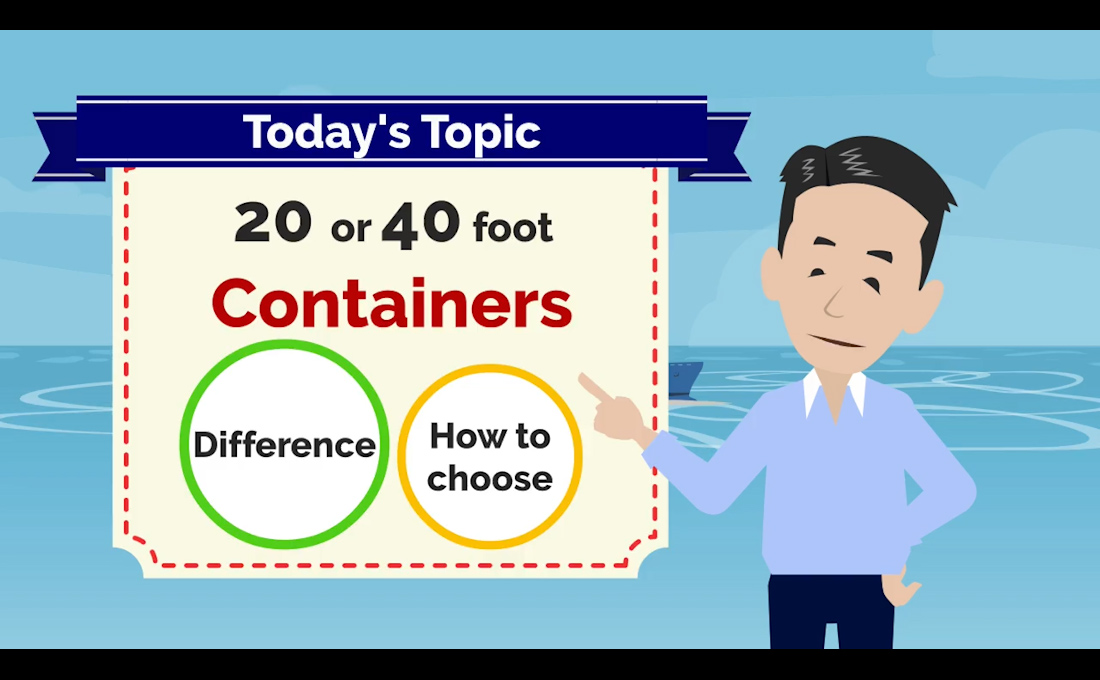
Hello, it’s Iino.
Today, I’d like to explain the difference between 20 foot and 40 foot containers and what to look at when choosing a container.
This time, we will use an example of general dry containers. 40 foot containers are not high cube ones.
Also, to make it easier to understand, we will use estimated figures.
The details of additional types of containers are explained in other videos. I have attached the link in the comment section, so please check it out.
Here we go!
How to choose 20’or 40’Container

Normally, the method used to transport high volumes of cargo is to ship by sea using 20 foot or 40 foot containers.
A shipper will determine the volume and logistics cost and choose the best suited container between these two types.
However, when choosing a container, people who do not usually use containers may not know which one to select.
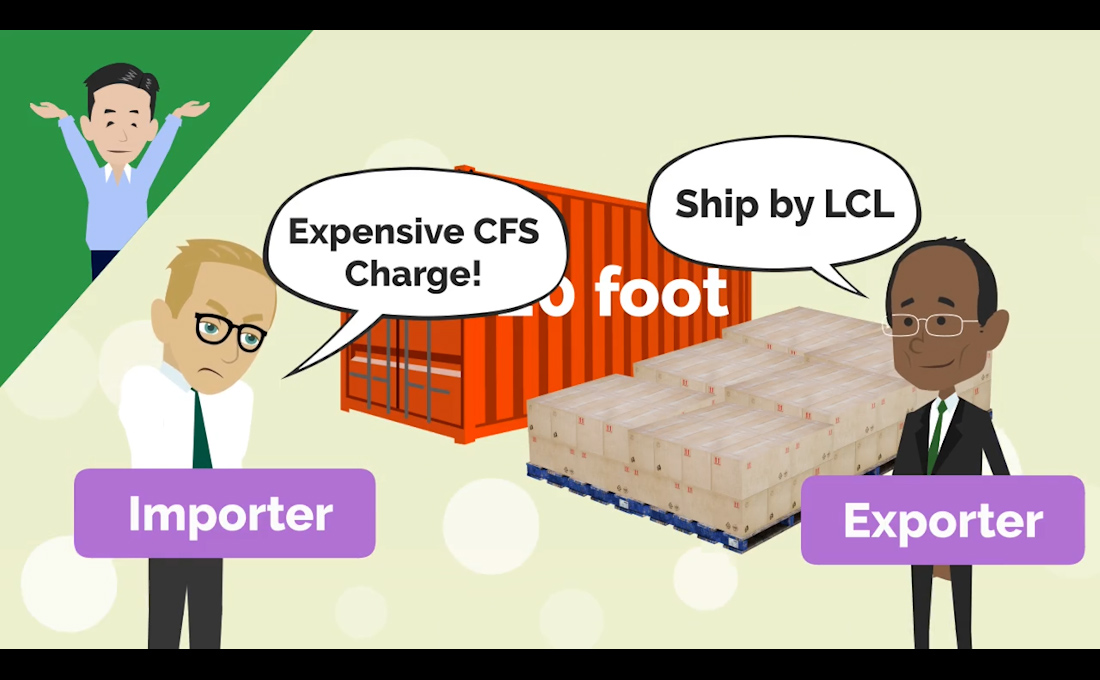
Choosing an appropriate container when exporting is important for the importing side.
For example, even if you have enough volume to use a 20 foot container, but choose LCL without understanding the break-even point, a large CFS charge will incur on the importing side.
This could cause the importer to complain.
So, it is important for you to determine the volume and choose an appropriate shipping method.
Two Points to choose Container Size

These kinds of problems actually happen when using 20 foot and 40 foot containers.
Here are some highlights when choosing 20 foot and 40 foot containers.
These are two keys;
・Volume and maximum cargo weight
・Cost of importing side
Let’s take a closer look.
Volume and Maximum Cargo Weight
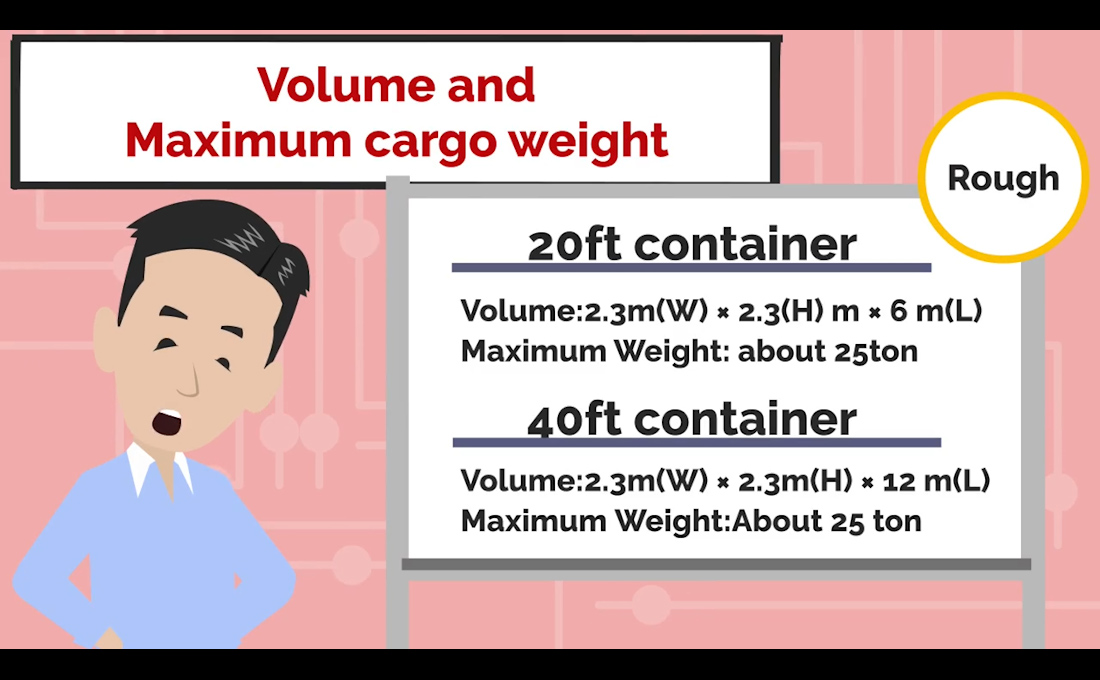
First, I will explain the volume and the maximum cargo weight of a container.
The following will show the volume, and the maximum cargo weight of 20 foot and 40 foot containers.
20 foot container;
Volume; W:2.3M, H:2.3M, L:6M
Maximum cargo weigh ; about 25ton
40 foot container;
Volume; W:2.3M, H:2.3M, L:12M
Maximum cargo weight ; About 25 ton
These figures are “rough estimates” for the purpose of the video and the maximum cargo weight may vary depending on each country’s traffic road law.
When you are actually transporting cargo, please check the delivery destination’s traffic road law.
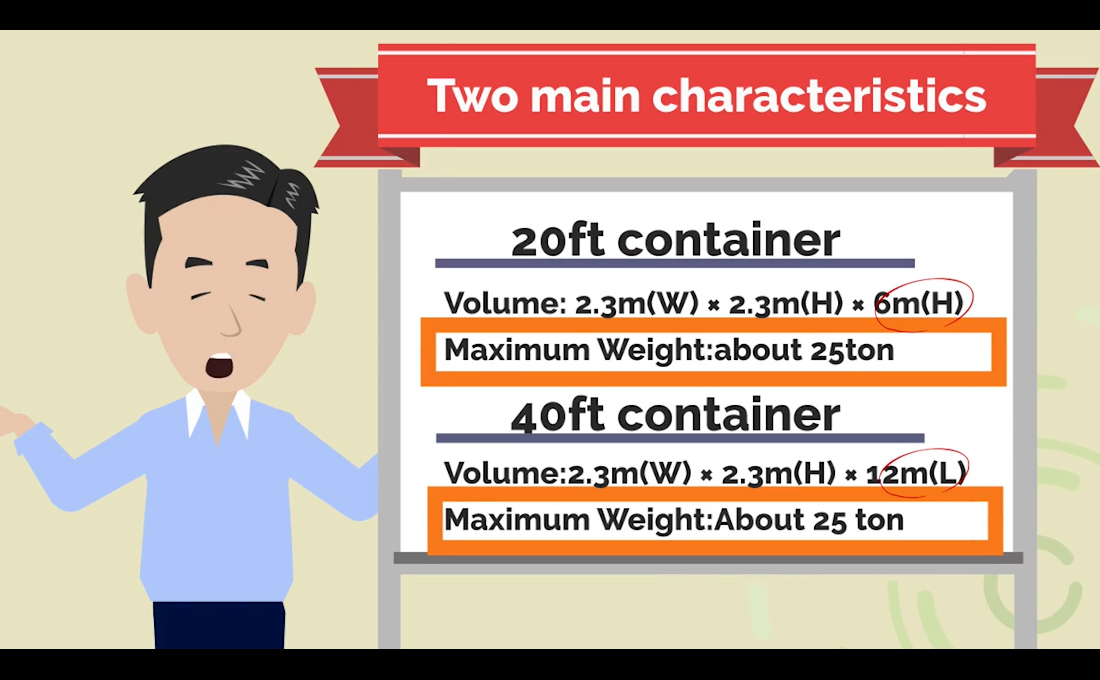
Now, you can tell that there are two main characteristics as follows;
・The volume is doubled in 40 foot containers
・The maximum cargo weight are the same
As the length of the container is doubled when comparing 20 foot and 40 foot containers, people will tend to think the maximum load capacity will be doubled, too.
However, capacity in these two types of containers is the same. The only difference is the volume. As you can see, 40 foot container is more suited when transporting high volume of cargo.
About “Volume” and “Weight”

Here, let me give you additional advice on “volume” and “weight” of logistics.
Two of the most important things to consider when sending cargo are volume and weight.
For example
・Light but bulky
・Heavy but small
You need to consider the volume and weight on these cargoes.
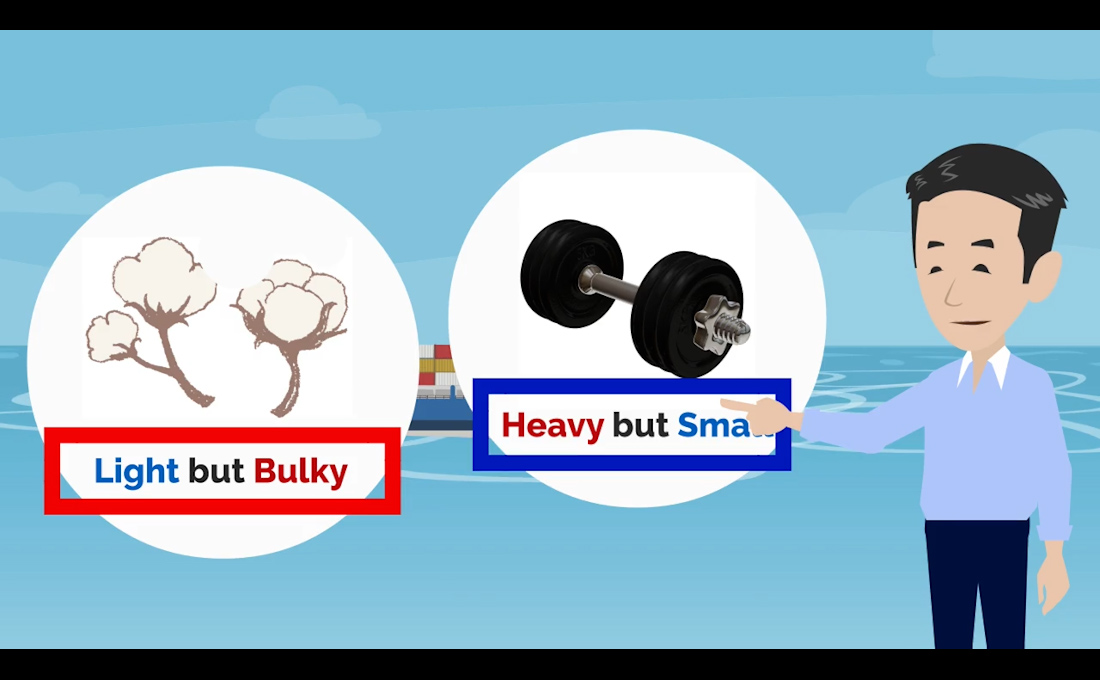
In an extreme example, when transporting cotton, the weight will be reduced but it will require a lot of space.
Also, when transporting dumbbells and barbells for exercise, the weight will be increased but will not require much space.
On the other hand, rice and water aren’t bulky but heavy.
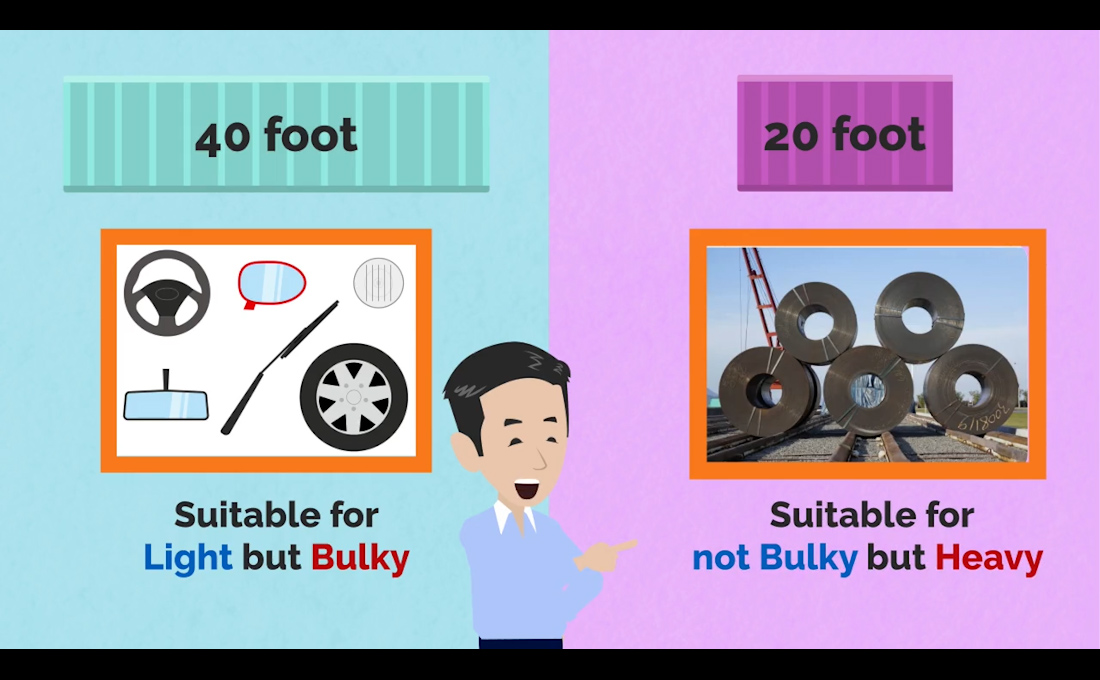
When you consider the characteristics of containers, 40 foot containers are more suitable when transporting light but bulky parts like plastic parts for cars.
On the other hand, the items which are not bulky but heavy will be transported using 20 foot containers.
For example, rolls of metal aren’t bulky but very heavy.
If we load such chunk of metal in 40ft containers, the maximum load capacity 25 ton will be easily exceeded.
Cost for the Importing Side

Next, let me explain the cost for the importing side.
When containers arrive in the importing country, they are stored in the container terminal until customs clearance has been completed and collected.
There is a subject for THC (Terminal Handling Charge) on an invoice used by shipping lines.
This charge is different for 20 foot and 40 foot containers.
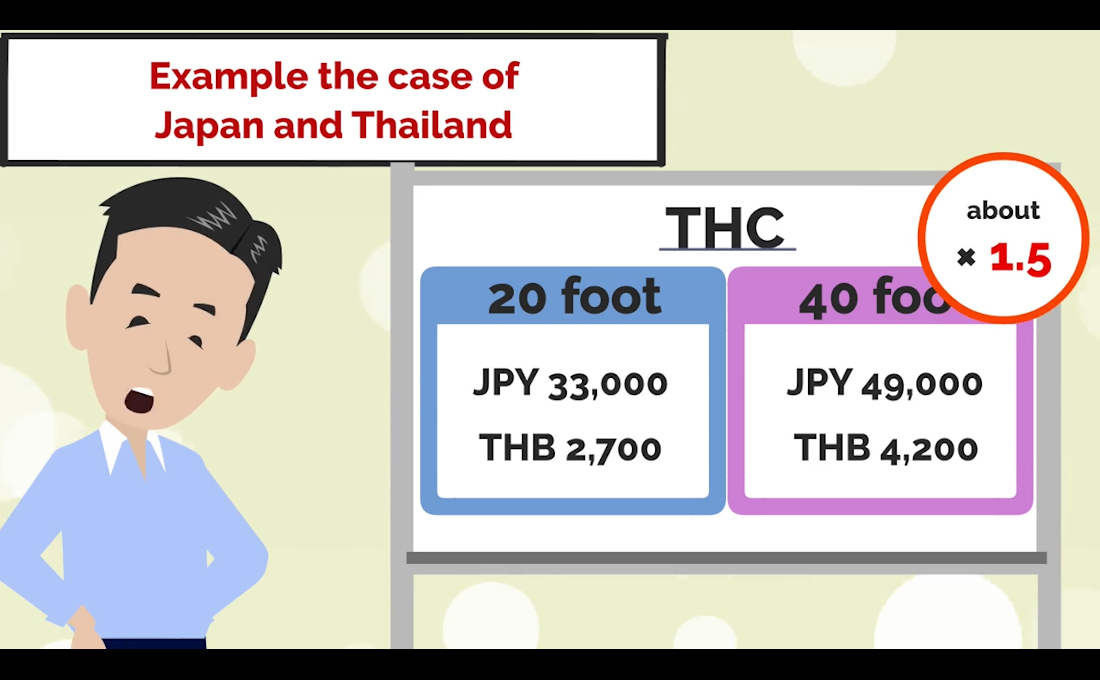
For example, the following example shows the case between Japan and Thailand.
THC in Japan is 33,000 Japanese Yen per 20 foot and 49,000 Japanese Yen per 40 foot.
THC in Thailand is 2,700 Thai bath per 20 foot and 4,200 Thai bath per 40 foot.
The 40 foot cost has not doubled, but has been charged at about 1.5 times more.
There is a big difference.
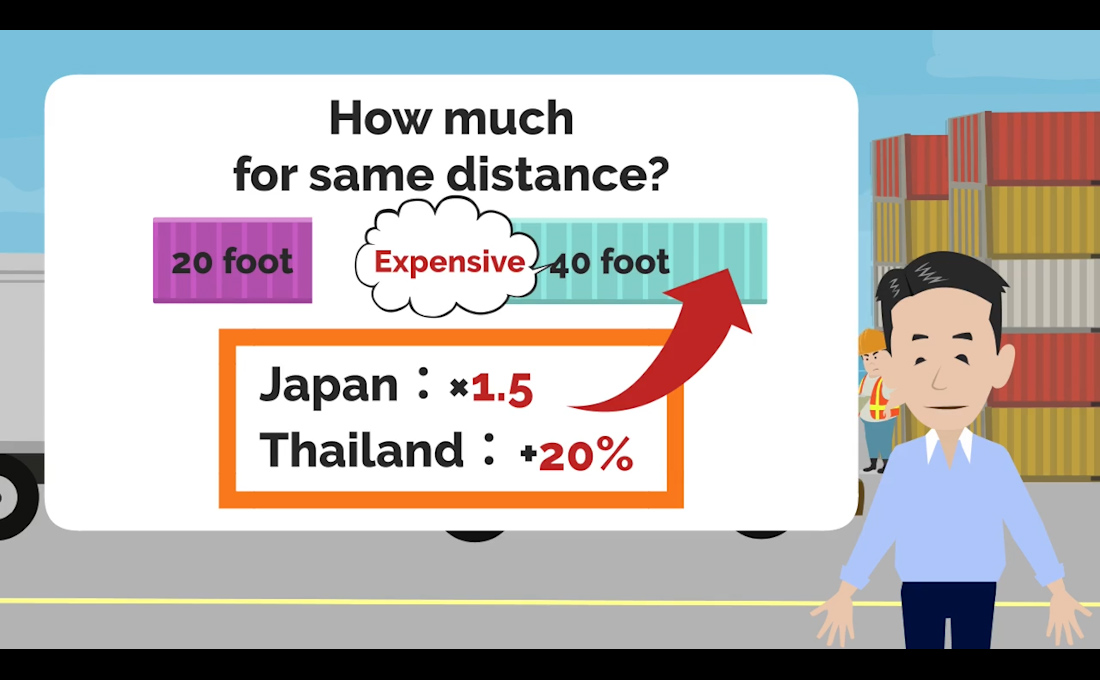
Also, when transporting a container from a port, a truck called drayage is required.
If we are transporting 20 foot and 40 foot containers the same distance, do you think the 40 foot container cost will double because of the increased length?
You won’t be charged doubled, but it will cost more to transport a 40 foot container than transporting a 20ft container.
The cost difference in between is about 1.5 times in Japan.
In Thailand, it depends on the company and the location but normally, 40 foot containers are charged 20% more than 20 foot containers.
It is very important to choose an appropriate container for the volume.
Summary
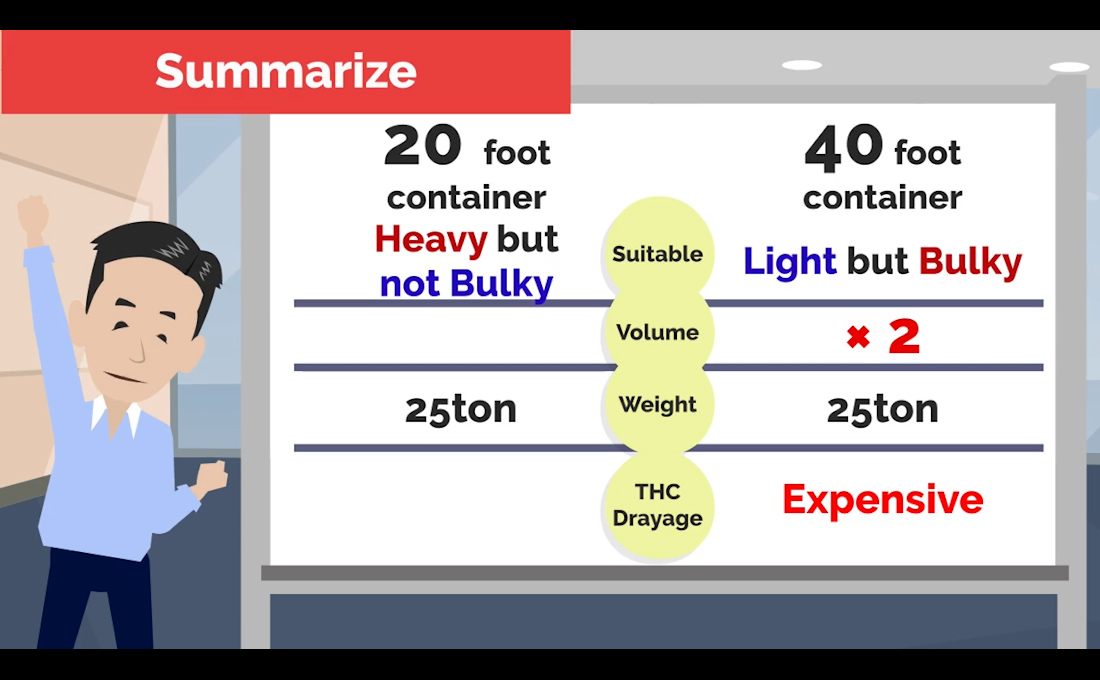
Let’s summarize today’s topic.
The difference between 20 foot and 40 foot containers is the volume.
40 foot containers have doubled volume of 20 foot containers.
The maximum cargo weight is the same for both.
These are the characteristics.
・Light but bulky cargo is suited for 40 foot containers
・Heavy but not bulky cargo is suited for 20 foot containers
The cost which incurs in the importing side may vary depending on whether 20 foot or 40 foot containers are used.
The main costs are THC and drayage.
When transporting cargo, you need to be aware of these costs and choose the most suited container depending on the cargo’s volume and weight.
That’s all for today. Thank you.
Contact to IINO san

★Contact to IINO san★
—————————————–
FaceBook Page
https://www.facebook.com/iinosaan
Linked In Message
https://www.linkedin.com/in/shinya-iino/
Twitter DM
https://twitter.com/iino_saan
—————————————–
 IINO
IINO I’m waiting for your contact!









